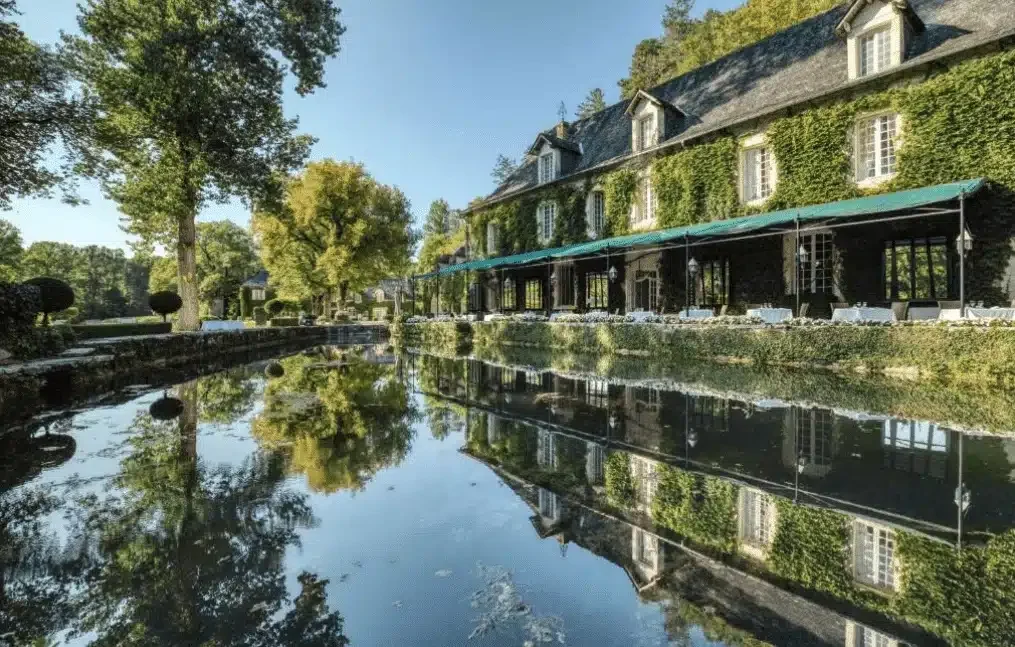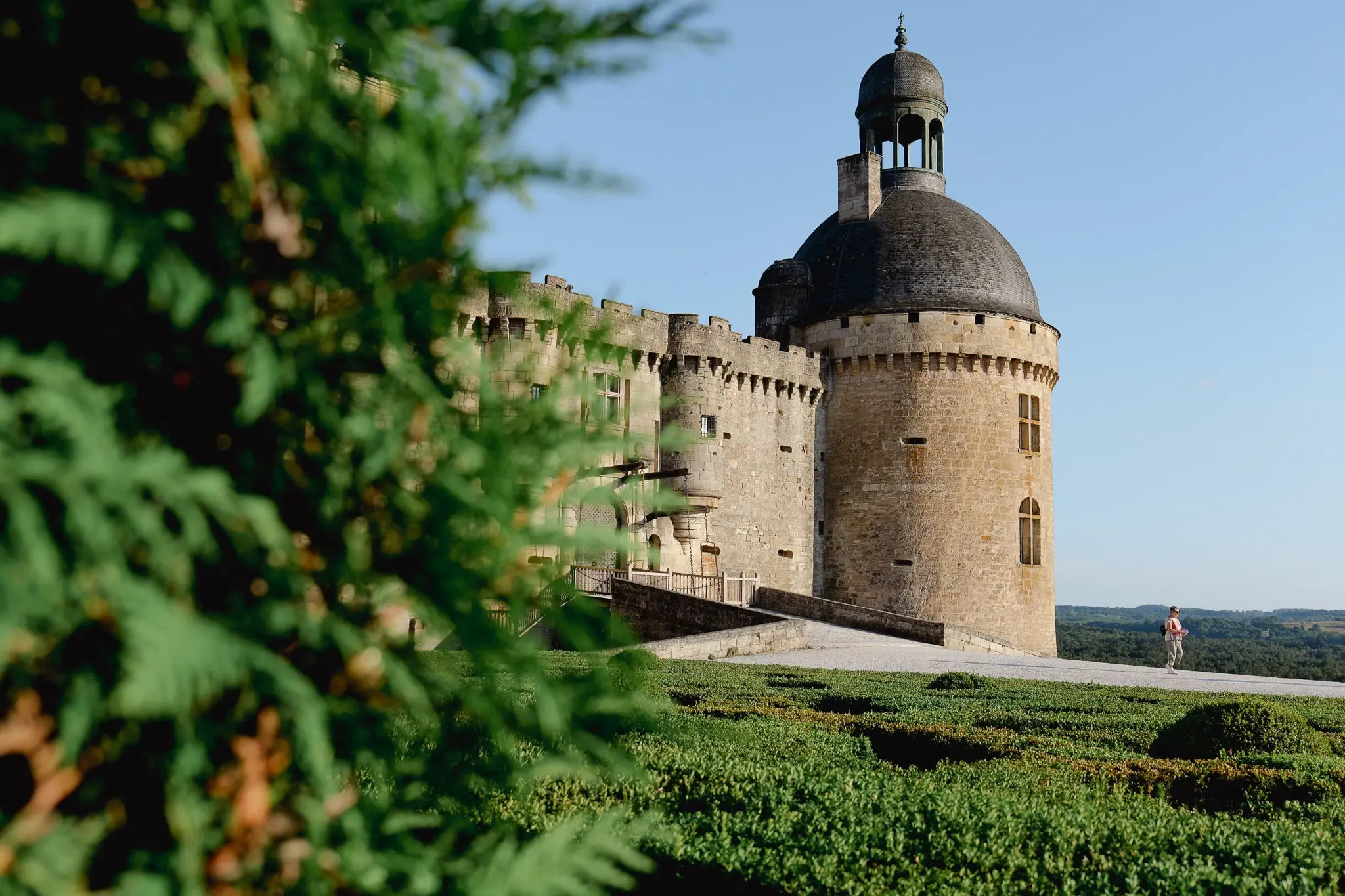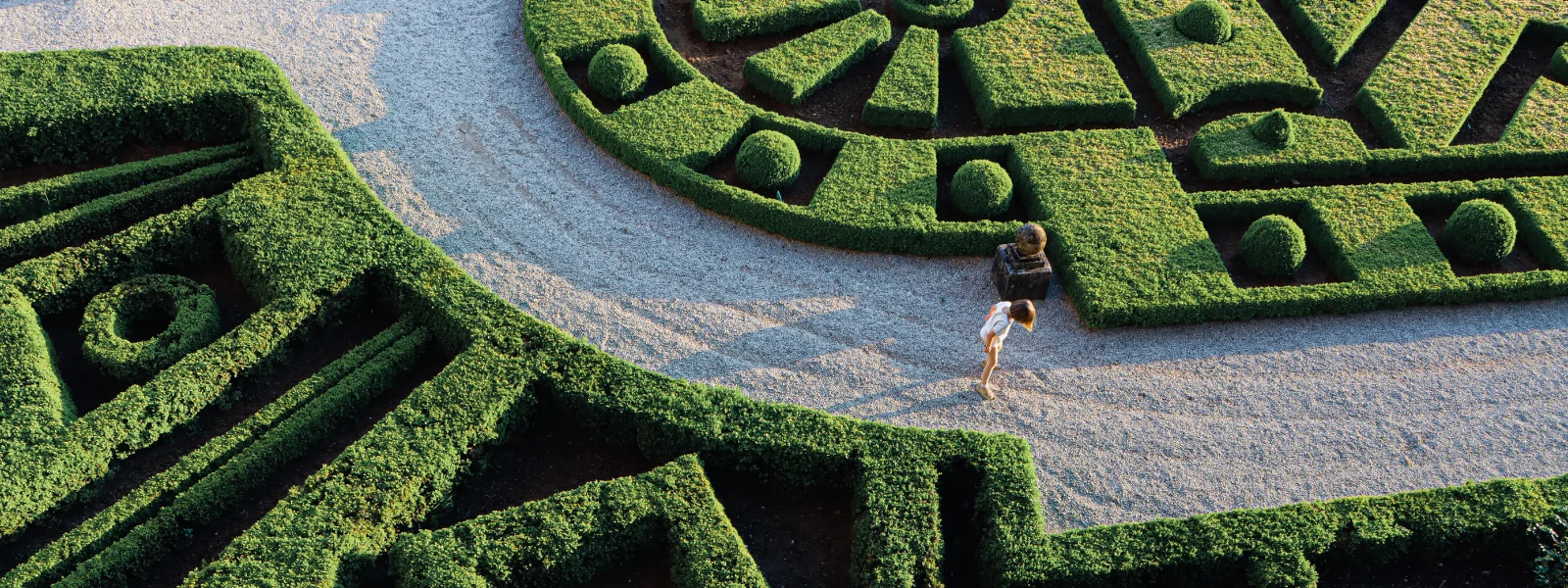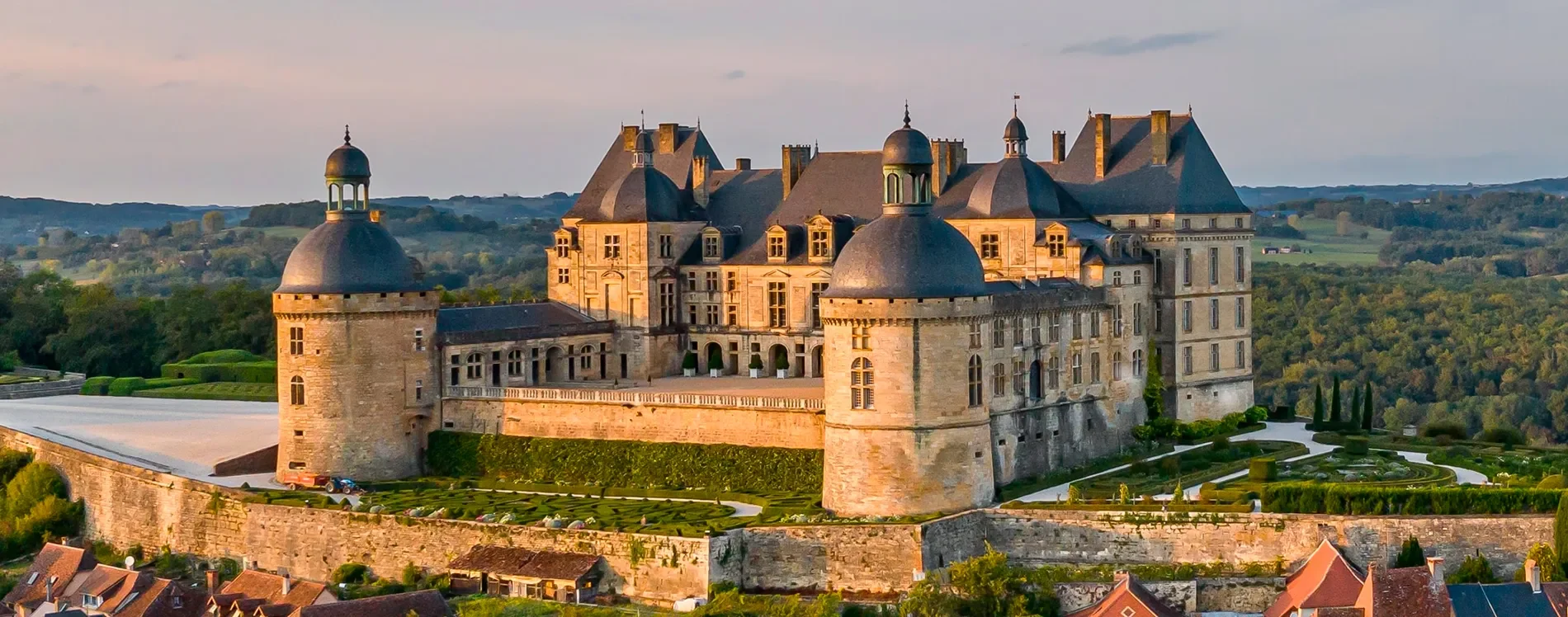The Black Perigord : A Journey through History and Time
Nestling in the heart of the Nouvelle-Aquitaine region, the Périgord Noir is a land where the past blends harmoniously with the present. Renowned for its prehistoric sites and exceptional châteaux, this region offers a real journey back in time.
From prehistory to classical times, the history of the Périgord Noir is rich and fascinating, attracting thousands of visitors every year eager to discover its hidden treasures.
To the Origins: The First Men of Black Périgord
The Périgord Noir is famous for its decorated caves and prehistoric remains, which bear witness to the presence of man for thousands of years. The Lascaux caves, often dubbed the "Sistine Chapel of Prehistory", are home to cave paintings dating back 17,000 years. These impressive works of art, depicting animals such as horses, bison and deer, reveal an artistic skill and sensitivity that continues to intrigue archaeologists and visitors alike.
As well as Lascaux, the Périgord Noir boasts other remarkable prehistoric sites, including the Font-de-Gaume cave and the Cap Blanc shelter. These sites are privileged witnesses to the life of early man, offering a unique insight into their daily lives and beliefs.
Medieval heritage: Châteaux and Bastides
The medieval era has left its mark on the landscape of the Périgord Noir. The region is dotted with castles and fortresses, witness to the power struggles and conflicts that shaped its history.
The bastides, fortified towns typical of south-western France, are another example of the
a precious heritage from the Middle Ages. Monpazier, founded in 1284 by Edward I of England, is a perfect example of a bastide town, with its chequered streets and central square surrounded by arcades. This remarkably well-preserved medieval town allows visitors to immerse themselves in the atmosphere of the 13th century.
L'Exception Classique : Hautefort
The Château de Hautefort, perched on a promontory, is the most beautiful and impressive classical château in the region. It offers breathtaking views of the surrounding area and a fascinating insight into the entourage of Louis XIV.
Hidden treasures and picturesque villages
The Périgord Noir is also famous for its charming villages, often ranked among the most beautiful in France. La Roque-Gageac, set against a cliff and bordered by the Dordogne, is a real gem. With its stone houses, narrow streets and exotic gardens, this village offers an idyllic setting for a leisurely stroll.
Sarlat-la-Canéda, capital of the Périgord Noir region, is another must-see destination. This medieval town, with its cobbled streets, half-timbered houses and bustling market, is a veritable open-air museum. Every street corner reveals a piece of history, offering visitors an immersive and authentic experience.
The Périgord Noir Today: A Mix of History and Modernity
Today, the Périgord Noir continues to attract visitors with its natural beauty and rich historical heritage. Festivals, traditional markets and cultural events enliven the region throughout the year, celebrating both its historic heritage and its contemporary vitality.
The gastronomy of the Périgord Noir is another of its major attractions. The region is renowned for its local produce, including foie gras, truffles, walnuts and ceps. Local restaurants offer tasty dishes to delight the palates of gourmets and gourmands alike.
The Périgord Noir, with its thousand-year-old history and enchanting landscapes, is a destination that will appeal to lovers of history, nature and gastronomy. Every visit is a discovery, every site an open window on the past. Travelling through its valleys, exploring its caves and strolling through its villages, visitors are transported on a journey through time, discovering the soul of a unique and fascinating region.
Whether you're an archaeology enthusiast, a lover of old stones or simply looking for a getaway, the Périgord Noir promises an unforgettable experience at the heart of French history and beauty.
Nestling in the heart of the Nouvelle-Aquitaine region, the Périgord Noir is a land where the past blends harmoniously with the present. Renowned for its prehistoric sites and exceptional châteaux, this region offers a real journey back in time.
From prehistory to classical times, the history of the Périgord Noir is rich and fascinating, attracting thousands of visitors every year eager to discover its hidden treasures.
To the Origins: The First Men of Black Périgord
The Périgord Noir is famous for its decorated caves and prehistoric remains, which bear witness to the presence of man for thousands of years. The Lascaux caves, often dubbed the "Sistine Chapel of Prehistory", are home to cave paintings dating back 17,000 years. These impressive works of art, depicting animals such as horses, bison and deer, reveal an artistic skill and sensitivity that continues to intrigue archaeologists and visitors alike.
As well as Lascaux, the Périgord Noir boasts other remarkable prehistoric sites, including the Font-de-Gaume cave and the Cap Blanc shelter. These sites are privileged witnesses to the life of early man, offering a unique insight into their daily lives and beliefs.
Medieval heritage: Châteaux and Bastides
The medieval era has left its mark on the landscape of the Périgord Noir. The region is dotted with castles and fortresses, witness to the power struggles and conflicts that shaped its history.
The bastides, fortified towns typical of south-western France, are another example of the
a precious heritage from the Middle Ages. Monpazier, founded in 1284 by Edward I of England, is a perfect example of a bastide town, with its chequered streets and central square surrounded by arcades. This remarkably well-preserved medieval town allows visitors to immerse themselves in the atmosphere of the 13th century.
L'Exception Classique : Hautefort
The Château de Hautefort, perched on a promontory, is the most beautiful and impressive classical château in the region. It offers breathtaking views of the surrounding area and a fascinating insight into the entourage of Louis XIV.
Hidden treasures and picturesque villages
The Périgord Noir is also famous for its charming villages, often ranked among the most beautiful in France. La Roque-Gageac, set against a cliff and bordered by the Dordogne, is a real gem. With its stone houses, narrow streets and exotic gardens, this village offers an idyllic setting for a leisurely stroll.
Sarlat-la-Canéda, capital of the Périgord Noir region, is another must-see destination. This medieval town, with its cobbled streets, half-timbered houses and bustling market, is a veritable open-air museum. Every street corner reveals a piece of history, offering visitors an immersive and authentic experience.
The Périgord Noir Today: A Mix of History and Modernity
Today, the Périgord Noir continues to attract visitors with its natural beauty and rich historical heritage. Festivals, traditional markets and cultural events enliven the region throughout the year, celebrating both its historic heritage and its contemporary vitality.
The gastronomy of the Périgord Noir is another of its major attractions. The region is renowned for its local produce, including foie gras, truffles, walnuts and ceps. Local restaurants offer tasty dishes to delight the palates of gourmets and gourmands alike.
The Périgord Noir, with its thousand-year-old history and enchanting landscapes, is a destination that will appeal to lovers of history, nature and gastronomy. Every visit is a discovery, every site an open window on the past. Travelling through its valleys, exploring its caves and strolling through its villages, visitors are transported on a journey through time, discovering the soul of a unique and fascinating region.
Whether you're an archaeology enthusiast, a lover of old stones or simply looking for a getaway, the Périgord Noir promises an unforgettable experience at the heart of French history and beauty.
Nestling in the heart of the Nouvelle-Aquitaine region, the Périgord Noir is a land where the past blends harmoniously with the present. Renowned for its prehistoric sites and exceptional châteaux, this region offers a real journey back in time.
From prehistory to classical times, the history of the Périgord Noir is rich and fascinating, attracting thousands of visitors every year eager to discover its hidden treasures.
To the Origins: The First Men of Black Périgord
The Périgord Noir is famous for its decorated caves and prehistoric remains, which bear witness to the presence of man for thousands of years. The Lascaux caves, often dubbed the "Sistine Chapel of Prehistory", are home to cave paintings dating back 17,000 years. These impressive works of art, depicting animals such as horses, bison and deer, reveal an artistic skill and sensitivity that continues to intrigue archaeologists and visitors alike.
As well as Lascaux, the Périgord Noir boasts other remarkable prehistoric sites, including the Font-de-Gaume cave and the Cap Blanc shelter. These sites are privileged witnesses to the life of early man, offering a unique insight into their daily lives and beliefs.
Medieval heritage: Châteaux and Bastides
The medieval era has left its mark on the landscape of the Périgord Noir. The region is dotted with castles and fortresses, witness to the power struggles and conflicts that shaped its history.
The bastides, fortified towns typical of south-western France, are another example of the
a precious heritage from the Middle Ages. Monpazier, founded in 1284 by Edward I of England, is a perfect example of a bastide town, with its chequered streets and central square surrounded by arcades. This remarkably well-preserved medieval town allows visitors to immerse themselves in the atmosphere of the 13th century.
L'Exception Classique : Hautefort
The Château de Hautefort, perched on a promontory, is the most beautiful and impressive classical château in the region. It offers breathtaking views of the surrounding area and a fascinating insight into the entourage of Louis XIV.
Hidden treasures and picturesque villages
The Périgord Noir is also famous for its charming villages, often ranked among the most beautiful in France. La Roque-Gageac, set against a cliff and bordered by the Dordogne, is a real gem. With its stone houses, narrow streets and exotic gardens, this village offers an idyllic setting for a leisurely stroll.
Sarlat-la-Canéda, capital of the Périgord Noir region, is another must-see destination. This medieval town, with its cobbled streets, half-timbered houses and bustling market, is a veritable open-air museum. Every street corner reveals a piece of history, offering visitors an immersive and authentic experience.
The Périgord Noir Today: A Mix of History and Modernity
Today, the Périgord Noir continues to attract visitors with its natural beauty and rich historical heritage. Festivals, traditional markets and cultural events enliven the region throughout the year, celebrating both its historic heritage and its contemporary vitality.
The gastronomy of the Périgord Noir is another of its major attractions. The region is renowned for its local produce, including foie gras, truffles, walnuts and ceps. Local restaurants offer tasty dishes to delight the palates of gourmets and gourmands alike.
The Périgord Noir, with its thousand-year-old history and enchanting landscapes, is a destination that will appeal to lovers of history, nature and gastronomy. Every visit is a discovery, every site an open window on the past. Travelling through its valleys, exploring its caves and strolling through its villages, visitors are transported on a journey through time, discovering the soul of a unique and fascinating region.
Whether you're an archaeology enthusiast, a lover of old stones or simply looking for a getaway, the Périgord Noir promises an unforgettable experience at the heart of French history and beauty.
Nestling in the heart of the Nouvelle-Aquitaine region, the Périgord Noir is a land where the past blends harmoniously with the present. Renowned for its prehistoric sites and exceptional châteaux, this region offers a real journey back in time.
From prehistory to classical times, the history of the Périgord Noir is rich and fascinating, attracting thousands of visitors every year eager to discover its hidden treasures.
To the Origins: The First Men of Black Périgord
The Périgord Noir is famous for its decorated caves and prehistoric remains, which bear witness to the presence of man for thousands of years. The Lascaux caves, often dubbed the "Sistine Chapel of Prehistory", are home to cave paintings dating back 17,000 years. These impressive works of art, depicting animals such as horses, bison and deer, reveal an artistic skill and sensitivity that continues to intrigue archaeologists and visitors alike.
As well as Lascaux, the Périgord Noir boasts other remarkable prehistoric sites, including the Font-de-Gaume cave and the Cap Blanc shelter. These sites are privileged witnesses to the life of early man, offering a unique insight into their daily lives and beliefs.
Medieval heritage: Châteaux and Bastides
The medieval era has left its mark on the landscape of the Périgord Noir. The region is dotted with castles and fortresses, witness to the power struggles and conflicts that shaped its history.
The bastides, fortified towns typical of south-western France, are another example of the
a precious heritage from the Middle Ages. Monpazier, founded in 1284 by Edward I of England, is a perfect example of a bastide town, with its chequered streets and central square surrounded by arcades. This remarkably well-preserved medieval town allows visitors to immerse themselves in the atmosphere of the 13th century.
L'Exception Classique : Hautefort
The Château de Hautefort, perched on a promontory, is the most beautiful and impressive classical château in the region. It offers breathtaking views of the surrounding area and a fascinating insight into the entourage of Louis XIV.
Hidden treasures and picturesque villages
The Périgord Noir is also famous for its charming villages, often ranked among the most beautiful in France. La Roque-Gageac, set against a cliff and bordered by the Dordogne, is a real gem. With its stone houses, narrow streets and exotic gardens, this village offers an idyllic setting for a leisurely stroll.
Sarlat-la-Canéda, capital of the Périgord Noir region, is another must-see destination. This medieval town, with its cobbled streets, half-timbered houses and bustling market, is a veritable open-air museum. Every street corner reveals a piece of history, offering visitors an immersive and authentic experience.
The Périgord Noir Today: A Mix of History and Modernity
Today, the Périgord Noir continues to attract visitors with its natural beauty and rich historical heritage. Festivals, traditional markets and cultural events enliven the region throughout the year, celebrating both its historic heritage and its contemporary vitality.
The gastronomy of the Périgord Noir is another of its major attractions. The region is renowned for its local produce, including foie gras, truffles, walnuts and ceps. Local restaurants offer tasty dishes to delight the palates of gourmets and gourmands alike.
The Périgord Noir, with its thousand-year-old history and enchanting landscapes, is a destination that will appeal to lovers of history, nature and gastronomy. Every visit is a discovery, every site an open window on the past. Travelling through its valleys, exploring its caves and strolling through its villages, visitors are transported on a journey through time, discovering the soul of a unique and fascinating region.
Whether you're an archaeology enthusiast, a lover of old stones or simply looking for a getaway, the Périgord Noir promises an unforgettable experience at the heart of French history and beauty.














